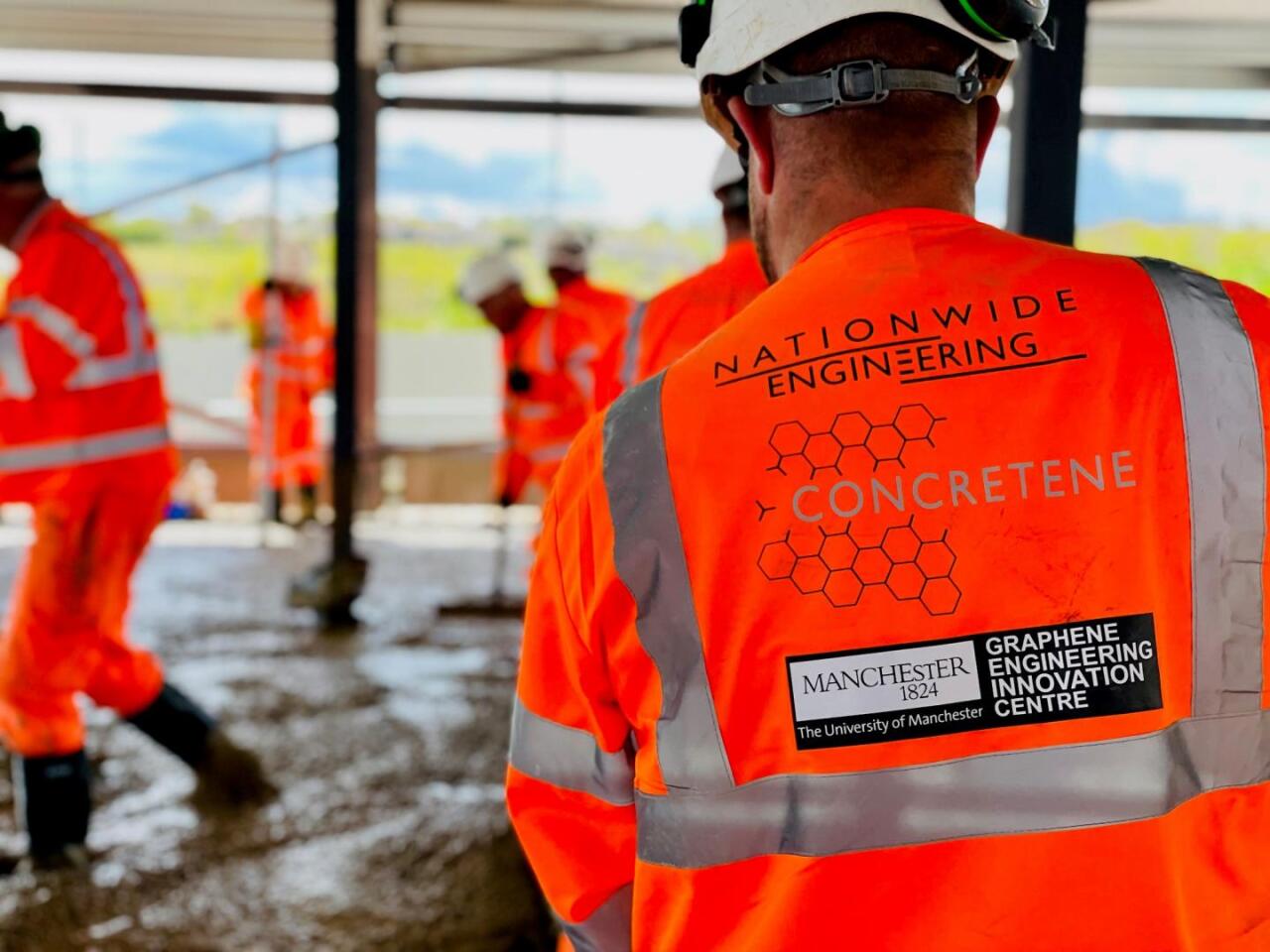
I do want to say that i did not expect to see graphene particles pop up in a mass production situation, yet here it is
If this can be expanded then this is is good news.
Right now we do have beneficiation. and proof of concept. all good..
World's first graphene-enhanced concrete slab poured in England
By Nick Lavars
May 25, 2021
https://newatlas.com/materials/worlds-first-graphene-enhanced-concrete-slab/
University of Manchester researchers Craig Dawson, Happiness Ijije and Lisa Scullion onsite as workers tend to the world's first graphene-enhanced concrete slab in the background
University of Manchester/Nationwide Engineering
VIEW 2 IMAGES
As the mostly widely used material on Earth, concrete has a massive carbon footprint that scientists are working to chip away at in all sorts of ways. Recent research projects have demonstrated how the wonder material graphene could play a role in this and now we're seeing the first real-world deployment of the technology, with engineers using so-called "Concretene" to form the foundations of a new gym in the UK.
As the world's strongest artificial material, graphene may have a lot to offer the world of construction, among its many other potential uses. Scientists have previously found success incorporating it into the concrete manufacturing process to make the finished product stronger and more water-resistant, while one research project even demonstrated how this graphene can be recovered from old tires.
The freshly poured Concretene is the handiwork of scientists at the University of Manchester and construction firm Nationwide Engineering. To form the material, the team adds tiny amounts of graphene to water and cement, where it both acts as a mechanical support and offers an extra catalyst surface for the chemical reactions that turn the mix into the concrete paste. The end result is improved bonding at a microscopic scale, and material that is around 30 percent stronger than standard concrete.
“We have produced a graphene-based additive mixture that is non-disruptive at the point of use," says Dr Craig Dawson, from the University of Manchester. "That means we can dose our additive directly at the batching plant where the concrete is being produced as part of their existing system, so there’s no change to production or to the construction guys laying the floor."
The Concretene was used in an initial pour of a concrete floor slab for the new Southern Quarter gym near Stonehenge in England in early May, with a second pouring completing the foundation on Tuesday. This is the world's first graphene-enhanced concrete slab, and will make the gym a living laboratory as the building is completed and operated and Nationwide Engineering monitors the performance of the innovative material.
A slab has been poured for a new gym building in England using graphene-enhanced concrete in a world first
University of Manchester/Nationwide Engineering
Concrete production accounts for around eight percent of global carbon emissions, and would stand behind only China and the US as an emitter if it were a country. Because Concretene is far stronger than traditional concrete, far less of it is required to bring the same structural strength to a building, which could result in a far smaller carbon footprint and cost.
Nationwide Engineering has crunched the numbers on this, and claims that if Concretene was used across the global supply chain it could shave as much as two percent off worldwide emissions. The material is more expensive to produce at around 5 percent additional cost, but because less of it is needed the company estimates that it can offer an overall saving of between 10 to 20 percent to the customer.
“We are thrilled to have developed and constructed this game-changing, graphene-enhanced concrete on a real project,” says Alex McDermott, co-founder of Nationwide Engineering. “Together with our partners at The University of Manchester’s Graphene Engineering Innovation Centre and structural engineers HBPW Consulting, we are rapidly evolving our knowledge and experience and are positioned for wider industry deployment through our construction frameworks, becoming the go-to company for graphene-enhanced concrete.”
Source: University of Manchester

No comments:
Post a Comment